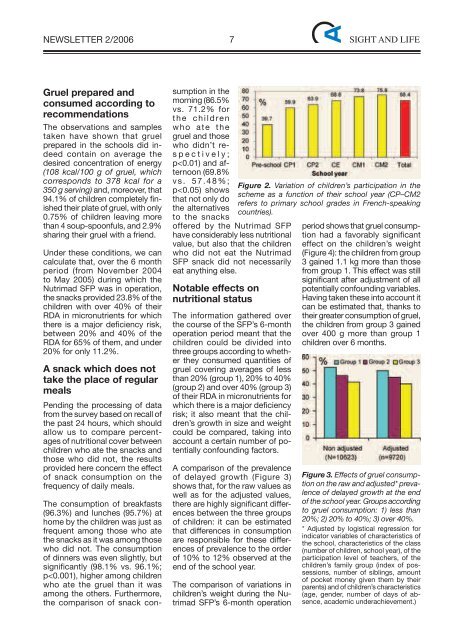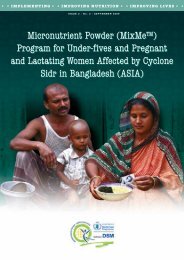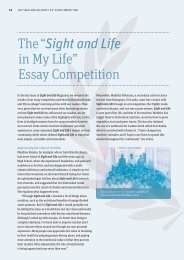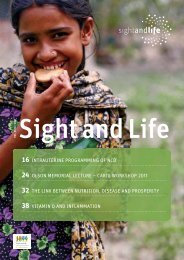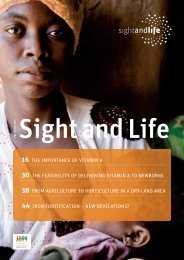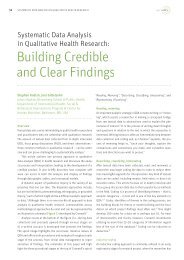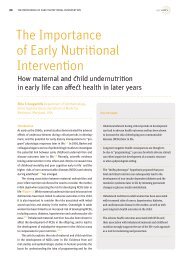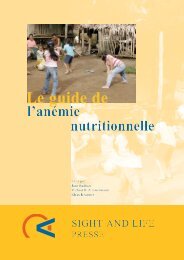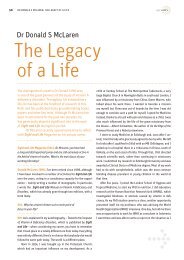Newsletter 02 2006.pdf - Sight and Life
Newsletter 02 2006.pdf - Sight and Life
Newsletter 02 2006.pdf - Sight and Life
Create successful ePaper yourself
Turn your PDF publications into a flip-book with our unique Google optimized e-Paper software.
NEWSLETTER 2/2006<br />
7<br />
SIGHT AND LIFE<br />
Gruel prepared <strong>and</strong><br />
consumed according to<br />
recommendations<br />
The observations <strong>and</strong> samples<br />
taken have shown that gruel<br />
prepared in the schools did indeed<br />
contain on average the<br />
desired concentration of energy<br />
(108 kcal/100 g of gruel, which<br />
corresponds to 378 kcal for a<br />
350 g serving) <strong>and</strong>, moreover, that<br />
94.1% of children completely finished<br />
their plate of gruel, with only<br />
0.75% of children leaving more<br />
than 4 soup-spoonfuls, <strong>and</strong> 2.9%<br />
sharing their gruel with a friend.<br />
Under these conditions, we can<br />
calculate that, over the 6 month<br />
period (from November 2004<br />
to May 2005) during which the<br />
Nutrimad SFP was in operation,<br />
the snacks provided 23.8% of the<br />
children with over 40% of their<br />
RDA in micronutrients for which<br />
there is a major deficiency risk,<br />
between 20% <strong>and</strong> 40% of the<br />
RDA for 65% of them, <strong>and</strong> under<br />
20% for only 11.2%.<br />
A snack which does not<br />
take the place of regular<br />
meals<br />
Pending the processing of data<br />
from the survey based on recall of<br />
the past 24 hours, which should<br />
allow us to compare percentages<br />
of nutritional cover between<br />
children who ate the snacks <strong>and</strong><br />
those who did not, the results<br />
provided here concern the effect<br />
of snack consumption on the<br />
frequency of daily meals.<br />
The consumption of breakfasts<br />
(96.3%) <strong>and</strong> lunches (95.7%) at<br />
home by the children was just as<br />
frequent among those who ate<br />
the snacks as it was among those<br />
who did not. The consumption<br />
of dinners was even slightly, but<br />
significantly (98.1% vs. 96.1%;<br />
p


